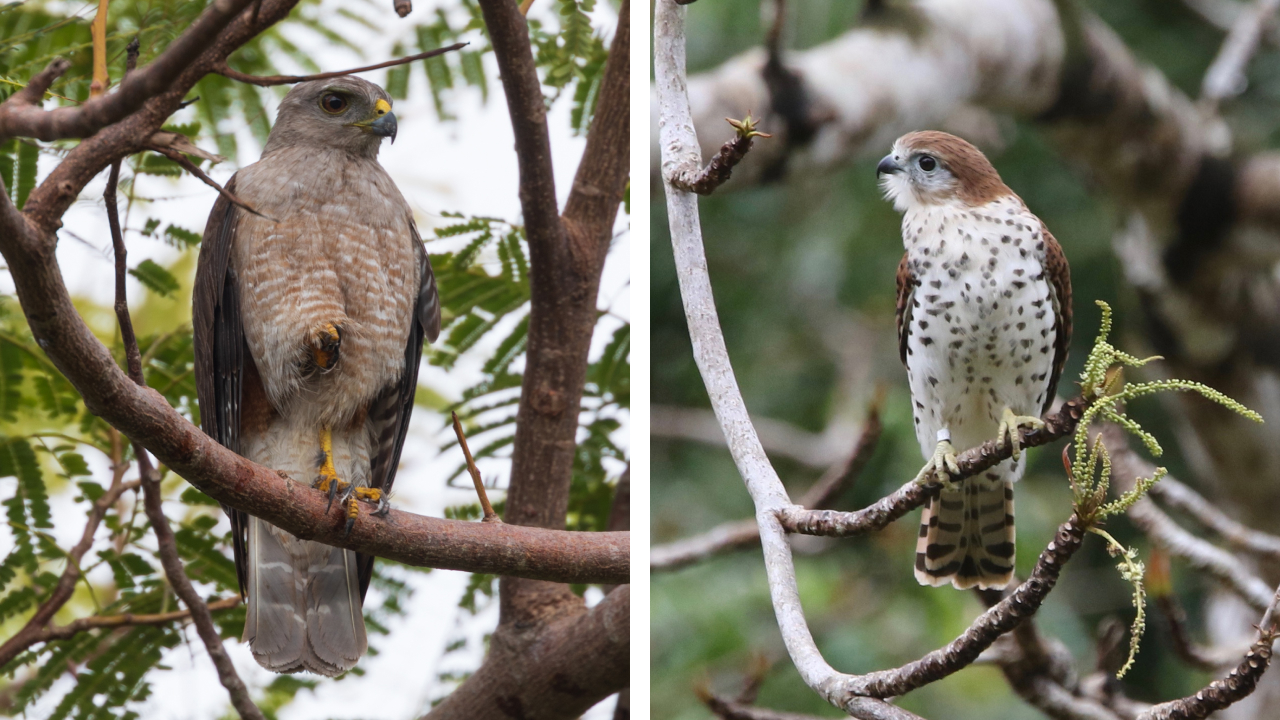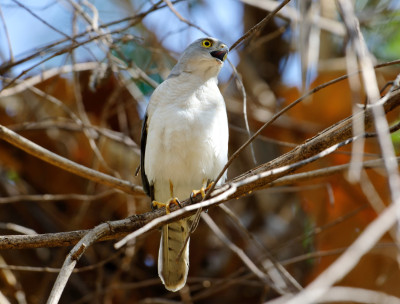
Photo by dmalerta; licensed under CC-BY-NC 4.0
The Conservation Status of Island Raptors
Of the world’s 561 raptor species, 161 are island endemics—species found only on islands. Examples include the Ridgway’s Hawk on Hispaniola (pictured at left below), the Mauritius Kestrel on Mauritius (pictured at right below), and the Cuban Kite on Cuba. These birds are especially vulnerable to extinction yet remain poorly studied, making it difficult to develop effective conservation strategies.
To address this gap, Peregrine Fund biologists teamed up with colleagues from Centro Austral de Investigaciones Científicas in Argentina, Conservation Science Global in the Philippines, and Hawk Mountain Sanctuary in the U.S. Together, they summarized the current status and future priorities for island raptor conservation in a paper published in the Journal of Raptor Research (July 2025).
The researchers confirmed that island endemic raptors are, on average, significantly more threatened than their continental counterparts. In fact, every known raptor species extinction since the 1500s has involved an island endemic. The authors also suggest that the current tally of 161 island endemic species may be an underestimate, with some subspecies likely to warrant full species status once phylogenetic analyses are updated. The conservation status of a species was not found to correlate with habitat type or taxonomy, but body size was a predictor for conservation status. This suggests that larger island endemic raptors are more prone to elevated extinction risk, thereby further prioritizing conservation efforts focused on large species like the Philippine Eagle (pictured in banner photo at top).
Threats vary across species and regions, but habitat loss and fragmentation, persecution, and poisoning remain the leading pressures. Island endemic raptors also show lower genetic diversity than mainland populations, but may be more resilient to the effects of inbreeding. This area needs further study.
Above all, the researchers emphasize the urgent need for global collaboration. Limited knowledge remains one of the greatest threats to island raptors, with Southeast Asia identified as the highest-priority region, home to some of the world’s least-studied species. Building international research networks, sharing data, and implementing active management strategies will be critical to preventing future extinctions.







